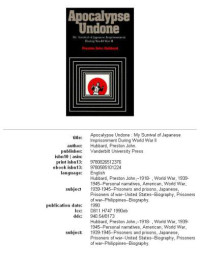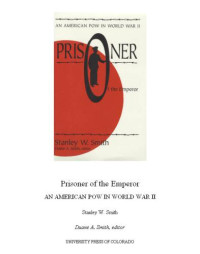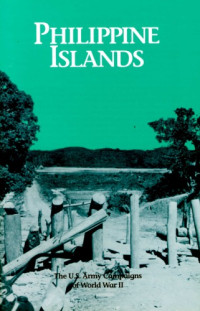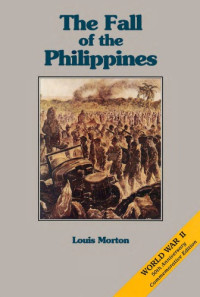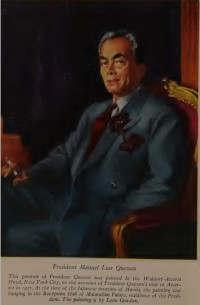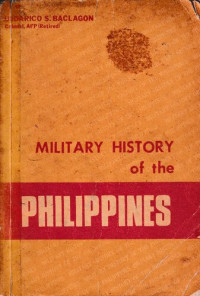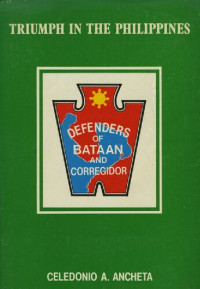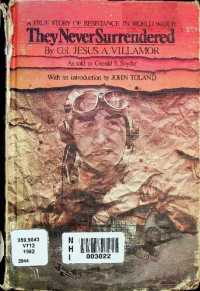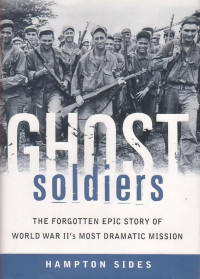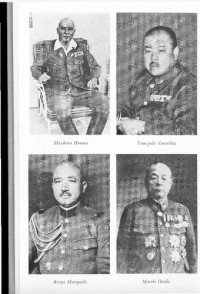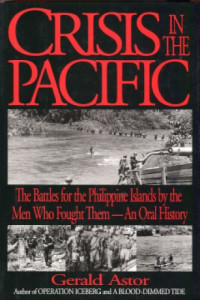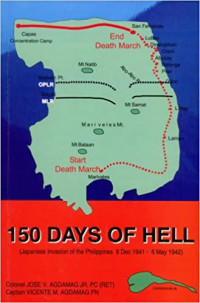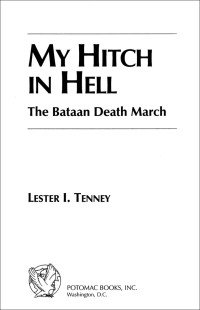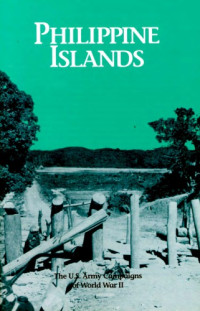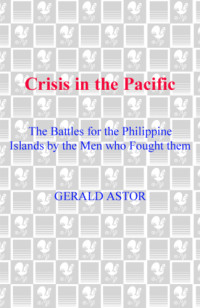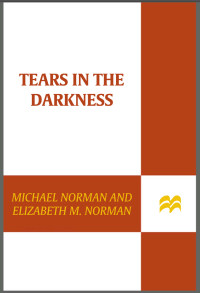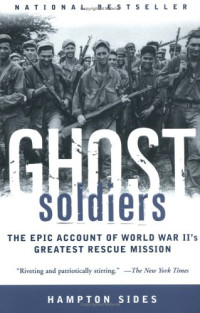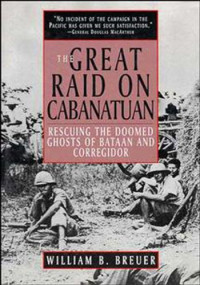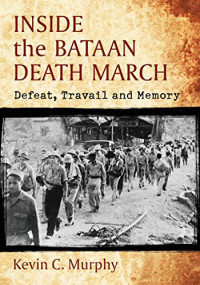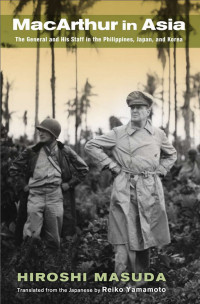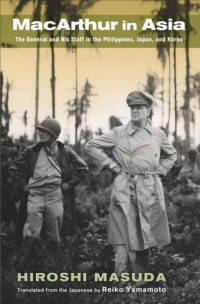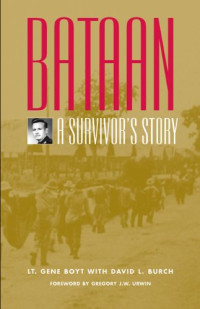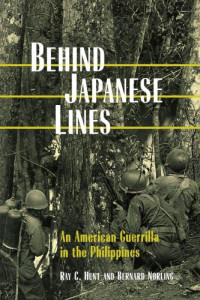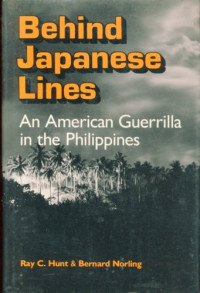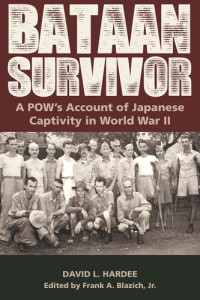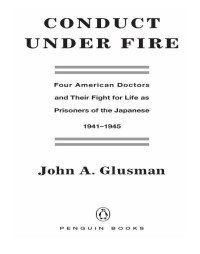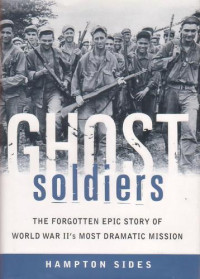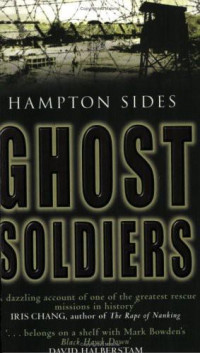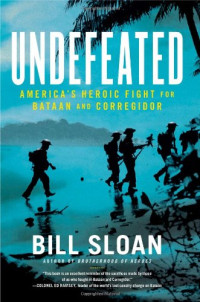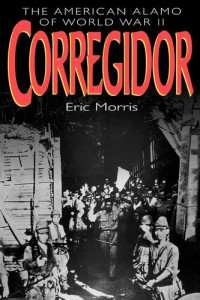
Tears in the darkness: the story of the Bataan Death March and its aftermath
Michael Norman & Elizabeth M. Norman
SUMMARY:
For the first four months of 1942, U.S., Filipino, and Japanese soldiers fought what was America’s first major land battle of World War II, the battle for the tiny Philippine peninsula of Bataan. It ended with the surrender of 76,000 Filipinos and Americans, the single largest defeat in American military history.The defeat, though, was only the beginning, as Michael and Elizabeth M. Norman make dramatically clear in this powerfully original book. From then until the Japanese surrendered in August 1945, the prisoners of war suffered an ordeal of unparalleled cruelty and savagery: forty-one months of captivity, starvation rations, dehydration, hard labor, deadly disease, and torture—far from the machinations of General Douglas MacArthur.The Normans bring to the story remarkable feats of reportage and literary empathy. Their protagonist, Ben Steele, is a figure out of Hemingway: a young cowboy turned sketch artist from Montana who joined the army to see the world. Juxtaposed against Steele’s story and the sobering tale of the Death March and its aftermath is the story of a number of Japanese soldiers.The result is an altogether new and original World War II book: it exposes the myths of military heroism as shallow and inadequate; it makes clear, with great literary and human power, that war causes suffering for people on all sides. Michael Norman, a former reporter for The New York Times and a Marine Corps combat veteran of Vietnam, is now a professor of journalism at New York University. He is the author of These Good Men: Friendships Forged from War, a memoir. Elizabeth M. Norman, the author of Women at War: The Story of Fifty Military Nurses Who Served in Vietnam and We Band of Angels: The Untold Story of American Nurses Trapped on Bataan by the Japanese, is a professor of humanities at New York University’s Steinhardt School of Culture, Education, and Human Development. For the first four months of 1942, U.S., Filipino, and Japanese soldiers fought what was America’s first major land battle of World War II, the battle for the tiny Philippine peninsula of Bataan. It ended with the surrender of 76,000 Filipinos and Americans, the single largest defeat in American military history.The defeat, though, was only the beginning, as Michael and Elizabeth M. Norman make dramatically clear in this powerfully original book. From then until the Japanese surrendered in August 1945, the prisoners of war suffered an ordeal of unparalleled cruelty and savagery: forty-one months of captivity, starvation rations, dehydration, hard labor, deadly disease, and torture—far from the machinations of General Douglas MacArthur.The Normans bring to the story remarkable feats of reportage and literary empathy. Their protagonist, Ben Steele, is a figure out of Hemingway: a young cowboy turned sketch artist from Montana who joined the army to see the world. Juxtaposed against Steele’s story and the sobering tale of the Death March and its aftermath is the story of a number of Japanese soldiers.The result is an altogether new and original World War II book: it exposes the myths of military heroism as shallow and inadequate; it makes clear, with great literary and human power, that war causes suffering for people on all sides "Ben Steele, a young cowboy on his home range in Montana who had enlisted as a soldier in World War II, was caught up in the battle for Bataan in the Philippines, then in the ensuing death march as a prisoner of the Japanese, which he barely survived. Beginning with harrowing sketches of that experience, and in the course of various adventures and misadventures, he continued to draw and paint, and has since become a truly distinguished artist of the West. Tears in the Darkness is a well-told, well-researched, and moving narrative."—Peter Matthiessen, author of Shadow Country "The Bataan Death March has been written about before, and well, by a number of historians . . . But then you pick up Michael Norman and Elizabeth M. Norman’s calm, stirring and humane Tears in the Darkness: The Story of the Bataan Death March and Its Aftermath, and you think: yes, we needed another . . . Tears in the Darkness is authoritative history. Ten years in the making, it is based on hundreds of interviews with American, Filipino and Japanese combatants. But it is also a narrative achievement. The book seamlessly blends a wide-angle view with the stories of many individual participants. And at this book’s beating emotional heart is the tale of just one American soldier, a young cowboy and aspiring artist out of Montana named Ben Steele . . . What is now known as the Bataan Death March began on April 10, 1942. Some 76,000 soldiers, many already close to death, were forced to walk 66 miles during the hottest season of the year—there were almost no buildings along the way, no trees, no shade—with little food and almost no water. It was called a death march for a simple reason: if you stopped marching, you were killed, by bayonet or rifle. There were many other ways to die during the Bataan Death March; it was a spree of arbitrary brutality. For sport, Japanese soldiers fractured skulls with their rifle butts. Japanese tanks ran over men who fell. Good Samaritans who tried to help fallen comrades were beaten or stabbed. Men were forced to bury others alive. To be on this march, one soldier said, was what it must feel like to 'come to the end of civilization' . . . What’s remarkable about this story, for Ben Steele and many others, was that it was just the beginning of the horrors that awaited them as Japanese prisoners of war . . . There are many Japanese voices in Tears in the Darkness. Mr. and Ms. Norman don't excuse Japan’s actions, but place them in careful context. Japanese soldiers, they write, were the products of 'a closed world of violence where men were subjected to the most brutal system of army discipline in the world.' These soldiers 'had been savaged to produce an army of savage intent' . . . In the end, though, Tears in the Darkness is a book about heroism and survival. All along you are glued, out of the corner of your eye, to one story, Ben Steele’s. If you aren't weeping openly by the book’s final scenes, when he is at last able to call home and let his family know that he is still alive after more than three years 'missing in action,' during which time this thin young man lost 50 pounds, then you have a hard crust of salt around your soul."—Dwight Gardener, The New York Times"For Americans the Death March was a first encounter with the brutality that would define Japan's military behavior, and the fact that the story has been told many times before does not dissuade Michael and Elizabeth Norman, both professors at New York University, from another effort. The result is an extremely detailed and thoroughly chilling treatment that, given the passage of time and thinning of ranks, could serve as popular history's final say on the subject. The Normans spent a decade in research and writing, interviewing more than 100 surviving American veterans and relatives of scores of others, and traveling to Japan to track down the most elusive and difficult sources some 20 former soldiers who were involved in the march and a guard from one of the miserable camps where more captives died from sickness, torture or starvation. The authors also find an ideal protagonist in Ben Steele, a former Montana cowboy who in 1940, at 22, joined the Army Air Corps and was sent to the Philippines. Steele survived the Death March and prison camp, and his personal story is the thread by which the authors spin their harrowing narrative, also using Steele's sketches to illustrate it…They have little admiration for Gen. Douglas MacArthur, the U.S. commander in the Philippines who was being glorified at home in 1942 as the greatest American military hero since Ulysses S. Grant. On Jan. 15, the authors report, MacArthur sent his beleaguered troops on Bataan a would-be morale booster, promising them that reinforcements in the form of troops and planes were on the way from the United States. "It was a lie, a Judas kiss," they write. "The Philippines was cut off. Washington knew it and so did MacArthur."—Richard Pyle, Associated Press"Tears in the Darkness is a valuable addition to the literature on the war. It is the best single volume on Bataan now available. Through a hard-driving narrative interspersed with numerous flashbacks, the Normans retell the painful saga of the battle to control the Philippines, which occurred in late 1941 and early 1942; the 66-mile Death March that followed the surrender; the atrocities that took place in the Japanese POW camps; and the Japanese 'Hell Ships' that transported thousands of POWs to the home islands for slave labor. Although the authors weave the stories of many people in and out of the narrative, they focus largely on Ben Steele, a young Montana cowboy who endured 41 months of agonizing captivity. During this ordeal Steele discovered his artistic talents—he would later become an art professor—and quietly began to sketch his surroundings. Since we have minimal visual documentation of Philippine POW camp life, Steele's many pen-and-ink drawings, recreated from now-lost originals, are especially welcome. The strength of this volume lies less with a radical reinterpretation than with a masterful compilation of new and fascinating individual stories. The Normans present the dramas of battle and captivity from a variety of perspectives, including the views of the average Japanese soldier . . . Based on ten years of research and 400 interviews, including several with former Japanese soldiers, the Normans conclude that in warfare, 'nothing runs true to plan' . . . If one plans to read but one volume on the Bataan story, it should be Tears in the Darkness."—Ferenc Szasz, author of Proceedings“Ben Steele, a young cowboy on his home range in Montana who had enlisted as a soldier in World War II, was caught up in the battle for Bataan in the Philippines, then in the ensuing death march as a prisoner of the Japanese, which he barely survived. Beginning with harrowing sketches of that experience, and in the course of various adventures and misadventures, he continued to draw and paint, and has since become a truly distinguished artist of the West. Tears in the Darkness is a well-told, well-researched, and moving narrative.”—Peter Matthiessen, author of Shadow Country“The battle of Bataan in the Philippines in 1942 resulted in the Japanese taking about 75,000 American and Filipino prisoners of war, America's worst military defeat ever. The prisoners were transferred across the Philippines, and treated horrifically in the process, in what became known as the Bataan Death March. The authors conducted 400 interviews with survivors and have put together an exhaustive narrative. They focus chiefly on Ben Steele, who survived the Philippine battles, the march, and 41 months in the slave labor camps. As much as a military history, this is the biography of a Montana cowboy transformed by great events.”—Edwin Burgess, Library Journal“Unlike historians who have spotlighted the titans—MacArthur and Wainwright, Yamashita and Homma—who matched strategies in the Philippines in 1942, the Normans focus on the ordinary soldiers who bore the brunt of the wartime savagery. At the center of this searing narrative stands Ben Steele, a Montana cowboy remarkable for the fortitude that sustains him through fierce combat, humiliating surrender, and then the infamous Bataan Death March into imprisonment: four years of unrelenting slave labor, starvation, torture, beatings, and disease. Because Steele went on in his postwar life to capture his wartime ordeal in harrowing drawings (here reproduced), readers confront in both image and word the brutality of war and the desperation of captivity. Readers learn how news of Japanese atrocities inflamed an American passion for vengeance and justified horrific bombing raids—incendiary and then nuclear—against Japanese cities. But readers will find it hard to view such raids as fitting punishment of a bestial enemy after reading the Normans’ chronicle of the bitter experiences of very human and often guilt-wracked Japanese soldiers. The narrative even humanizes the anguished Japanese commanders condemned by a victors’ justice that held them accountable for offenses of out-of-control subordinates. An indispensable addition to every World War II collection.”—Bryce Christensen, Booklist "[An] assiduous account of the Japanese conquest of the Philippines in World War II and the fate of the American garrison there. The ‘death march’ after Bataan fell in April 1942 has been a byword for the worst warfare can bring to a soldier. Some 76,000 American and Filipino soldiers surrendered, and their Japanese enemies despised them for doing so. The surrender was, write the Normans ‘the single largest defeat in American military history.’ The subsequent forced march of the prisoners, many of them ill and wounded and all of them malnourished, led to more than 10,000 deaths. By the authors’ account, the Americans were a mixed lot, poorly equipped, trained and led—which does not square with many other accounts of the early war in the Philippines, and which will doubtless excite discussion in military-history circles. What is certain is that the Japanese soldiers were little better off, short on rations, beaten and abused by their officers and marching everywhere, since, their doctrine stated, ‘a drop of gas is as precious as a drop of blood.’ The Normans take pains to present the Japanese side of the story, and some readers with direct memories of events may find their account too sympathetic, especially their portrayal of the commanding general, Homma Masaharu, who was executed for war crimes after the Allied victory. Yet their story says a great deal about the inglorious—and rightly unglorified—aspects of war, from the sense of shame that settled on the American commander at the moment of surrender to the terrible years that lay ahead. Drawing on the memories of participants on both sides, the Normans provide a careful history of a ghastly episode that still reverberates. Highly recommended for students of the Pacific War.”—Publishers Weekly
For the first four months of 1942, U.S., Filipino, and Japanese soldiers fought what was America’s first major land battle of World War II, the battle for the tiny Philippine peninsula of Bataan. It ended with the surrender of 76,000 Filipinos and Americans, the single largest defeat in American military history.The defeat, though, was only the beginning, as Michael and Elizabeth M. Norman make dramatically clear in this powerfully original book. From then until the Japanese surrendered in August 1945, the prisoners of war suffered an ordeal of unparalleled cruelty and savagery: forty-one months of captivity, starvation rations, dehydration, hard labor, deadly disease, and torture—far from the machinations of General Douglas MacArthur.The Normans bring to the story remarkable feats of reportage and literary empathy. Their protagonist, Ben Steele, is a figure out of Hemingway: a young cowboy turned sketch artist from Montana who joined the army to see the world. Juxtaposed against Steele’s story and the sobering tale of the Death March and its aftermath is the story of a number of Japanese soldiers.The result is an altogether new and original World War II book: it exposes the myths of military heroism as shallow and inadequate; it makes clear, with great literary and human power, that war causes suffering for people on all sides. Michael Norman, a former reporter for The New York Times and a Marine Corps combat veteran of Vietnam, is now a professor of journalism at New York University. He is the author of These Good Men: Friendships Forged from War, a memoir. Elizabeth M. Norman, the author of Women at War: The Story of Fifty Military Nurses Who Served in Vietnam and We Band of Angels: The Untold Story of American Nurses Trapped on Bataan by the Japanese, is a professor of humanities at New York University’s Steinhardt School of Culture, Education, and Human Development. For the first four months of 1942, U.S., Filipino, and Japanese soldiers fought what was America’s first major land battle of World War II, the battle for the tiny Philippine peninsula of Bataan. It ended with the surrender of 76,000 Filipinos and Americans, the single largest defeat in American military history.The defeat, though, was only the beginning, as Michael and Elizabeth M. Norman make dramatically clear in this powerfully original book. From then until the Japanese surrendered in August 1945, the prisoners of war suffered an ordeal of unparalleled cruelty and savagery: forty-one months of captivity, starvation rations, dehydration, hard labor, deadly disease, and torture—far from the machinations of General Douglas MacArthur.The Normans bring to the story remarkable feats of reportage and literary empathy. Their protagonist, Ben Steele, is a figure out of Hemingway: a young cowboy turned sketch artist from Montana who joined the army to see the world. Juxtaposed against Steele’s story and the sobering tale of the Death March and its aftermath is the story of a number of Japanese soldiers.The result is an altogether new and original World War II book: it exposes the myths of military heroism as shallow and inadequate; it makes clear, with great literary and human power, that war causes suffering for people on all sides "Ben Steele, a young cowboy on his home range in Montana who had enlisted as a soldier in World War II, was caught up in the battle for Bataan in the Philippines, then in the ensuing death march as a prisoner of the Japanese, which he barely survived. Beginning with harrowing sketches of that experience, and in the course of various adventures and misadventures, he continued to draw and paint, and has since become a truly distinguished artist of the West. Tears in the Darkness is a well-told, well-researched, and moving narrative."—Peter Matthiessen, author of Shadow Country "The Bataan Death March has been written about before, and well, by a number of historians . . . But then you pick up Michael Norman and Elizabeth M. Norman’s calm, stirring and humane Tears in the Darkness: The Story of the Bataan Death March and Its Aftermath, and you think: yes, we needed another . . . Tears in the Darkness is authoritative history. Ten years in the making, it is based on hundreds of interviews with American, Filipino and Japanese combatants. But it is also a narrative achievement. The book seamlessly blends a wide-angle view with the stories of many individual participants. And at this book’s beating emotional heart is the tale of just one American soldier, a young cowboy and aspiring artist out of Montana named Ben Steele . . . What is now known as the Bataan Death March began on April 10, 1942. Some 76,000 soldiers, many already close to death, were forced to walk 66 miles during the hottest season of the year—there were almost no buildings along the way, no trees, no shade—with little food and almost no water. It was called a death march for a simple reason: if you stopped marching, you were killed, by bayonet or rifle. There were many other ways to die during the Bataan Death March; it was a spree of arbitrary brutality. For sport, Japanese soldiers fractured skulls with their rifle butts. Japanese tanks ran over men who fell. Good Samaritans who tried to help fallen comrades were beaten or stabbed. Men were forced to bury others alive. To be on this march, one soldier said, was what it must feel like to 'come to the end of civilization' . . . What’s remarkable about this story, for Ben Steele and many others, was that it was just the beginning of the horrors that awaited them as Japanese prisoners of war . . . There are many Japanese voices in Tears in the Darkness. Mr. and Ms. Norman don't excuse Japan’s actions, but place them in careful context. Japanese soldiers, they write, were the products of 'a closed world of violence where men were subjected to the most brutal system of army discipline in the world.' These soldiers 'had been savaged to produce an army of savage intent' . . . In the end, though, Tears in the Darkness is a book about heroism and survival. All along you are glued, out of the corner of your eye, to one story, Ben Steele’s. If you aren't weeping openly by the book’s final scenes, when he is at last able to call home and let his family know that he is still alive after more than three years 'missing in action,' during which time this thin young man lost 50 pounds, then you have a hard crust of salt around your soul."—Dwight Gardener, The New York Times"For Americans the Death March was a first encounter with the brutality that would define Japan's military behavior, and the fact that the story has been told many times before does not dissuade Michael and Elizabeth Norman, both professors at New York University, from another effort. The result is an extremely detailed and thoroughly chilling treatment that, given the passage of time and thinning of ranks, could serve as popular history's final say on the subject. The Normans spent a decade in research and writing, interviewing more than 100 surviving American veterans and relatives of scores of others, and traveling to Japan to track down the most elusive and difficult sources some 20 former soldiers who were involved in the march and a guard from one of the miserable camps where more captives died from sickness, torture or starvation. The authors also find an ideal protagonist in Ben Steele, a former Montana cowboy who in 1940, at 22, joined the Army Air Corps and was sent to the Philippines. Steele survived the Death March and prison camp, and his personal story is the thread by which the authors spin their harrowing narrative, also using Steele's sketches to illustrate it…They have little admiration for Gen. Douglas MacArthur, the U.S. commander in the Philippines who was being glorified at home in 1942 as the greatest American military hero since Ulysses S. Grant. On Jan. 15, the authors report, MacArthur sent his beleaguered troops on Bataan a would-be morale booster, promising them that reinforcements in the form of troops and planes were on the way from the United States. "It was a lie, a Judas kiss," they write. "The Philippines was cut off. Washington knew it and so did MacArthur."—Richard Pyle, Associated Press"Tears in the Darkness is a valuable addition to the literature on the war. It is the best single volume on Bataan now available. Through a hard-driving narrative interspersed with numerous flashbacks, the Normans retell the painful saga of the battle to control the Philippines, which occurred in late 1941 and early 1942; the 66-mile Death March that followed the surrender; the atrocities that took place in the Japanese POW camps; and the Japanese 'Hell Ships' that transported thousands of POWs to the home islands for slave labor. Although the authors weave the stories of many people in and out of the narrative, they focus largely on Ben Steele, a young Montana cowboy who endured 41 months of agonizing captivity. During this ordeal Steele discovered his artistic talents—he would later become an art professor—and quietly began to sketch his surroundings. Since we have minimal visual documentation of Philippine POW camp life, Steele's many pen-and-ink drawings, recreated from now-lost originals, are especially welcome. The strength of this volume lies less with a radical reinterpretation than with a masterful compilation of new and fascinating individual stories. The Normans present the dramas of battle and captivity from a variety of perspectives, including the views of the average Japanese soldier . . . Based on ten years of research and 400 interviews, including several with former Japanese soldiers, the Normans conclude that in warfare, 'nothing runs true to plan' . . . If one plans to read but one volume on the Bataan story, it should be Tears in the Darkness."—Ferenc Szasz, author of Proceedings“Ben Steele, a young cowboy on his home range in Montana who had enlisted as a soldier in World War II, was caught up in the battle for Bataan in the Philippines, then in the ensuing death march as a prisoner of the Japanese, which he barely survived. Beginning with harrowing sketches of that experience, and in the course of various adventures and misadventures, he continued to draw and paint, and has since become a truly distinguished artist of the West. Tears in the Darkness is a well-told, well-researched, and moving narrative.”—Peter Matthiessen, author of Shadow Country“The battle of Bataan in the Philippines in 1942 resulted in the Japanese taking about 75,000 American and Filipino prisoners of war, America's worst military defeat ever. The prisoners were transferred across the Philippines, and treated horrifically in the process, in what became known as the Bataan Death March. The authors conducted 400 interviews with survivors and have put together an exhaustive narrative. They focus chiefly on Ben Steele, who survived the Philippine battles, the march, and 41 months in the slave labor camps. As much as a military history, this is the biography of a Montana cowboy transformed by great events.”—Edwin Burgess, Library Journal“Unlike historians who have spotlighted the titans—MacArthur and Wainwright, Yamashita and Homma—who matched strategies in the Philippines in 1942, the Normans focus on the ordinary soldiers who bore the brunt of the wartime savagery. At the center of this searing narrative stands Ben Steele, a Montana cowboy remarkable for the fortitude that sustains him through fierce combat, humiliating surrender, and then the infamous Bataan Death March into imprisonment: four years of unrelenting slave labor, starvation, torture, beatings, and disease. Because Steele went on in his postwar life to capture his wartime ordeal in harrowing drawings (here reproduced), readers confront in both image and word the brutality of war and the desperation of captivity. Readers learn how news of Japanese atrocities inflamed an American passion for vengeance and justified horrific bombing raids—incendiary and then nuclear—against Japanese cities. But readers will find it hard to view such raids as fitting punishment of a bestial enemy after reading the Normans’ chronicle of the bitter experiences of very human and often guilt-wracked Japanese soldiers. The narrative even humanizes the anguished Japanese commanders condemned by a victors’ justice that held them accountable for offenses of out-of-control subordinates. An indispensable addition to every World War II collection.”—Bryce Christensen, Booklist "[An] assiduous account of the Japanese conquest of the Philippines in World War II and the fate of the American garrison there. The ‘death march’ after Bataan fell in April 1942 has been a byword for the worst warfare can bring to a soldier. Some 76,000 American and Filipino soldiers surrendered, and their Japanese enemies despised them for doing so. The surrender was, write the Normans ‘the single largest defeat in American military history.’ The subsequent forced march of the prisoners, many of them ill and wounded and all of them malnourished, led to more than 10,000 deaths. By the authors’ account, the Americans were a mixed lot, poorly equipped, trained and led—which does not square with many other accounts of the early war in the Philippines, and which will doubtless excite discussion in military-history circles. What is certain is that the Japanese soldiers were little better off, short on rations, beaten and abused by their officers and marching everywhere, since, their doctrine stated, ‘a drop of gas is as precious as a drop of blood.’ The Normans take pains to present the Japanese side of the story, and some readers with direct memories of events may find their account too sympathetic, especially their portrayal of the commanding general, Homma Masaharu, who was executed for war crimes after the Allied victory. Yet their story says a great deal about the inglorious—and rightly unglorified—aspects of war, from the sense of shame that settled on the American commander at the moment of surrender to the terrible years that lay ahead. Drawing on the memories of participants on both sides, the Normans provide a careful history of a ghastly episode that still reverberates. Highly recommended for students of the Pacific War.”—Publishers Weekly
Kategori:
Tahun:
2009
Penerbit:
New York : Farrar, Straus, and Giroux, 2009.
Bahasa:
english
ISBN 10:
0374272603
ISBN 13:
9780374272609
Fail:
MOBI , 2.31 MB
IPFS:
,
english, 2009
 Amazon
Amazon  Barnes & Noble
Barnes & Noble  Bookshop.org
Bookshop.org  Tukar fail
Tukar fail Lebih banyak hasil carian
Lebih banyak hasil carian Faedah lain
Faedah lain 